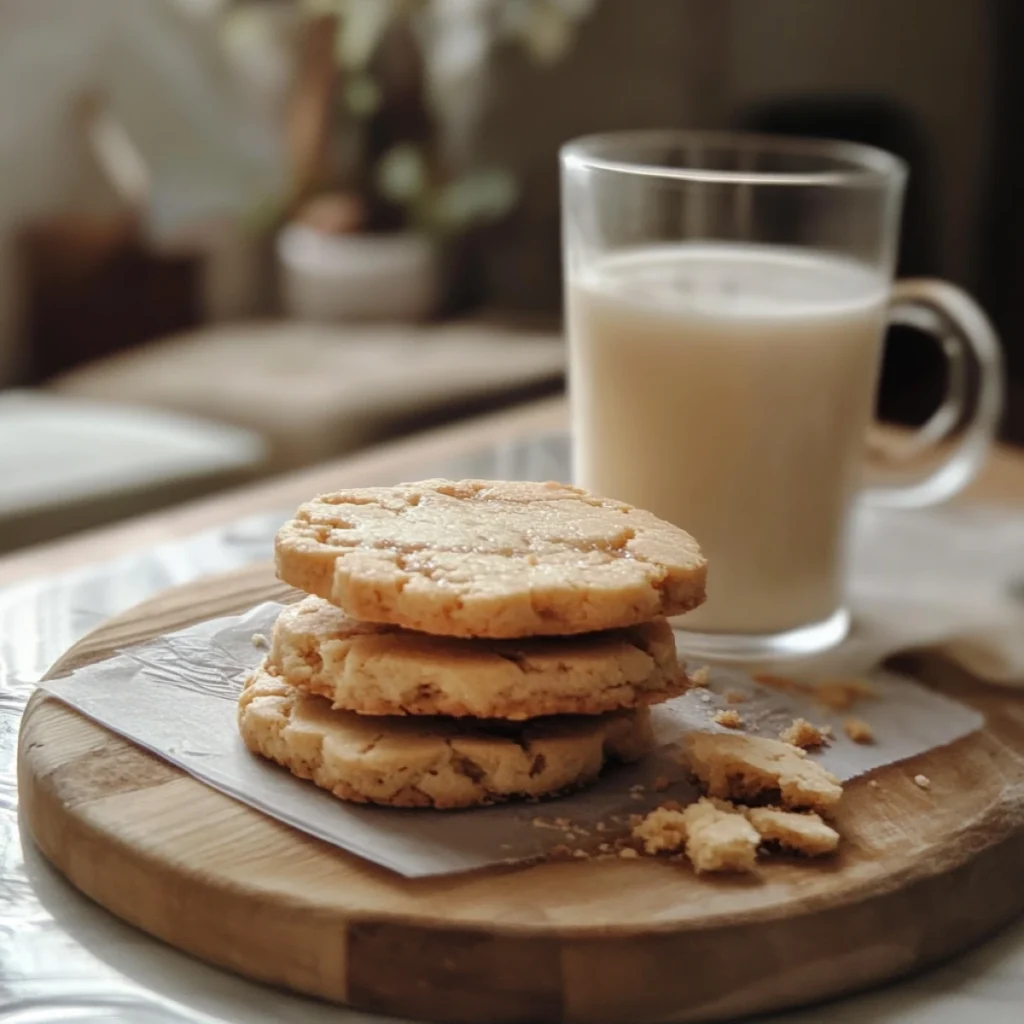
In baking, every ingredient plays a critical role, and milk is no exception. While ingredients like flour and sugar often get more attention, milk can significantly influence the texture, flavor, and overall structure of cookies. Understanding the impact of milk in cookie dough can help you create the perfect batch every time, whether you want your cookies chewy, crispy, or cakey.
For more baking insights and tips on using leftovers creatively, check out our post on Creative Sourdough Discard Uses, where you’ll learn how to incorporate sourdough discard into various baked goods. Additionally, if you’re interested in activating sourdough starter for your recipes, don’t miss our article on How to Activate Sourdough Discard.
For a deeper dive into the science of how milk and other ingredients impact cookies, check out King Arthur’s Guide to Cookie Science. For more practical baking tips, Serious Eats’ Cookie Baking Tips offers great advice on perfecting your cookie technique.
The Science of Milk in Cookies
1. How Milk Hydrates Dough and Affects Gluten Formation
Milk is composed of about 85% water, which makes it an essential hydrator for cookie dough. When added to dry ingredients, the water content in milk helps hydrate the flour, which promotes gluten formation. This gluten is crucial for the structure of cookies and plays a significant role in how they rise and spread.
- Milk adds moisture, which helps bind the ingredients together.
- The hydration provided by milk also influences the texture of the cookies.
- As the water in milk evaporates during baking, it helps the dough rise and creates a desirable texture.
Milk also contains proteins like casein and whey, which participate in the Maillard reaction during baking. This reaction contributes to the browning and flavor development in cookies.
2. Milk and Cookie Texture
The texture of your cookies can be altered depending on how much milk you use. Milk affects whether your cookies are chewy, cakey, or crispy.
- Chewy Cookies:
Milk adds moisture to the dough, making cookies softer and chewier. When combined with ingredients like brown sugar, the moisture retention is increased, resulting in a richer texture. - Cakey Cookies:
The water content in milk evaporates during baking, creating steam that helps produce a fluffier, cakey texture. This is why milk is often used when a lighter, airier result is desired. - Crispy Cookies:
Reducing the amount of milk or using none at all can result in a drier dough. This leads to crispier cookies, especially when paired with the right baking techniques.
How Milk Affects Cookie Spread and Rise
Cookie Spread:
Milk’s moisture content influences how much the dough spreads on the baking sheet. More liquid means that the dough will spread more as it bakes, which typically leads to thinner cookies.
Cookie Rise:
As cookies bake, the water in the milk evaporates, producing steam that helps the cookies rise. This evaporation process creates air pockets, contributing to a lighter, puffier texture.
Comparing Milk to Other Liquids in Cookie Baking
When deciding what liquid to use in cookie recipes, milk stands out for its unique properties. Here’s how it compares to other liquids like water, oil, or cream.
- Milk vs. Water:
While water hydrates the dough, it lacks the fat and proteins found in milk. This means that water doesn’t provide the same richness or help with browning during baking. - Milk vs. Oil:
Oil adds fat to the dough, making cookies tender but not contributing to their rise. Milk helps the dough rise and adds moisture, contributing to a more complex texture. - Milk vs. Cream:
Cream has a higher fat content than milk, making it a good option for producing richer cookies. However, cream can lead to a denser texture, whereas milk provides the perfect balance of hydration and fat for a well-rounded cookie.
Practical Tips for Using Milk in Cookie Recipes
Adjusting Milk for Different Cookie Types
The amount of milk used can vary based on the type of cookie you’re aiming to bake. Here are some ways to adjust milk in your recipes:
- For Chewy Cookies:
Add a small amount of milk to increase moisture and enhance chewiness. Pairing this with brown sugar will help retain moisture, resulting in soft and chewy cookies. - For Cakey Cookies:
Use more milk to add moisture and create a lighter, cakey texture. The steam produced during baking will help the cookies rise and puff up. - For Crispy Cookies:
Use little or no milk to create a drier dough, which leads to crispy cookies that spread out thinner during baking.
Troubleshooting Milk in Cookie Recipes
Using too much or too little milk can affect your cookies in different ways:
- Too Much Milk:
The dough may become runny and cause the cookies to spread too much during baking.
Solution: Add more flour to balance out the moisture. - Too Little Milk:
The dough may be too dry, resulting in crumbly cookies that don’t spread well.
Solution: Add a tablespoon of milk at a time until the dough reaches the desired consistency.
FAQs
Why Add Milk to Cookie Dough?
Milk adds moisture, which improves the texture and spread of cookies. It also helps with browning and adds a subtle sweetness and richness to the dough.
Can I Substitute Water for Milk in Cookies?
Yes, but using water will result in less flavorful cookies. Water lacks the fat and proteins found in milk, which are essential for creating rich, flavorful cookies.
How Much Milk Should I Add to Cookie Dough?
Typically, 1-3 tablespoons of milk is enough to hydrate the dough and impact the texture. Adding more than this may cause the cookies to spread too much or become too soft.
Does Milk Affect Cookie Flavor?
Yes, milk contributes to the flavor by enhancing browning through the Maillard reaction. The sugars and proteins in milk also add richness and depth to the cookie’s flavor.
Final Thoughts on Milk in Cookies
Milk is a versatile and important ingredient in cookie recipes, contributing to hydration, texture, and flavor. Whether you’re aiming for chewy, cakey, or crispy cookies, the right amount of milk can help you achieve your desired outcome. Understanding how milk interacts with other ingredients like sugar and flour will enhance your baking skills and help you make consistently delicious cookies.
For more insights into cookie science, you can explore The Science of Baking Cookies, which breaks down the chemical reactions that occur during baking and how different ingredients play a role.
